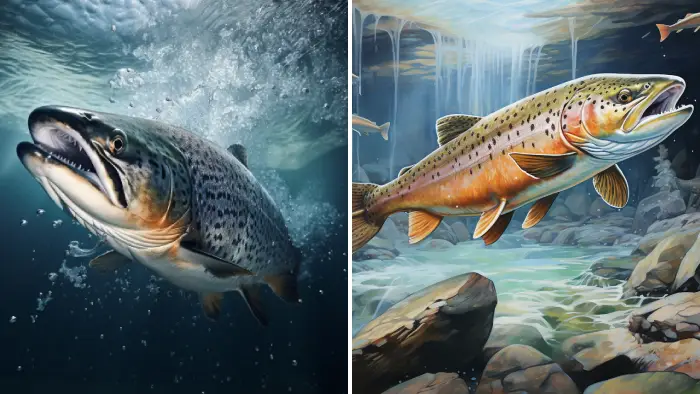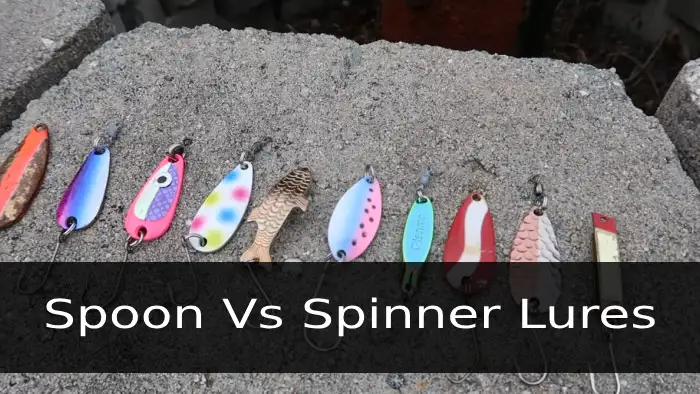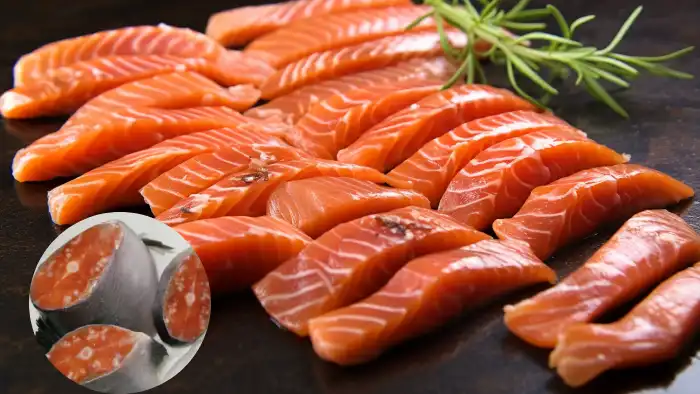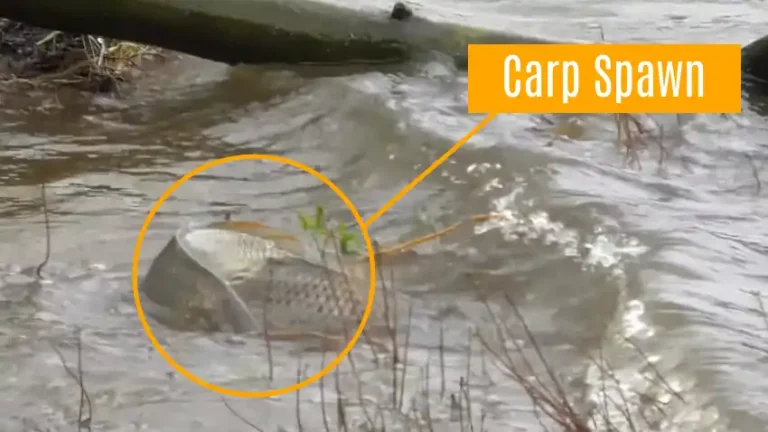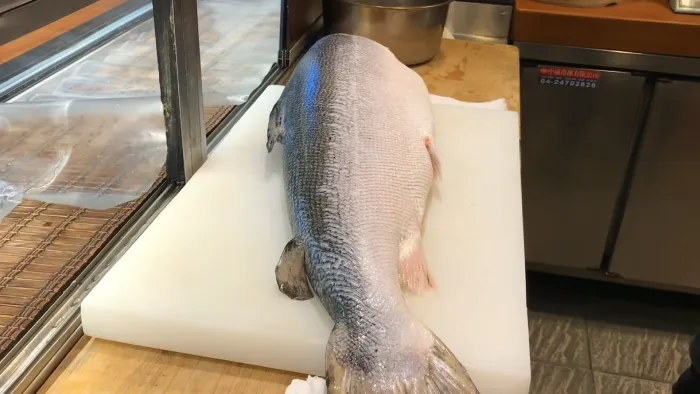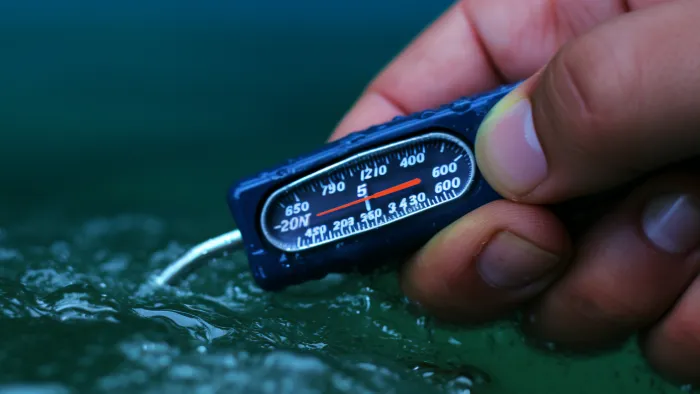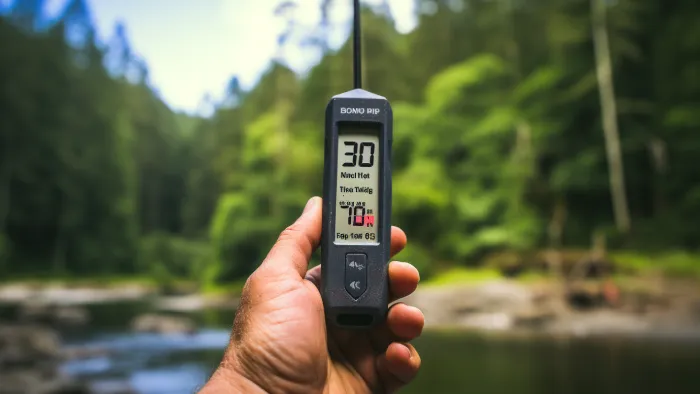Salmon vs Trout Identification for Fly Fishing: 8 Distinguishing Marks
Salmon and trout are two prized catches that adorn the waters you love to explore during your fly fishing adventures.
As the river rushes around you, the ability to differentiate between these magnificent fish becomes more than just a skill. It’s the gateway to a more fulfilling angling adventure.
In terms of physical characteristics, salmon exhibit a streamlined body with a concave tail, while trout often present a rounder and thicker build.
Another notable distinction lies in their coloration and markings. Salmon tend to have fewer spots, whereas trout are heavily adorned with prominent patterns.
We will discuss the difference between salmon and trout to identify them and the types of fly fishing techniques that can be used to catch salmon and trout.
Salmon vs Trout Identification: How to Tell Them Apart
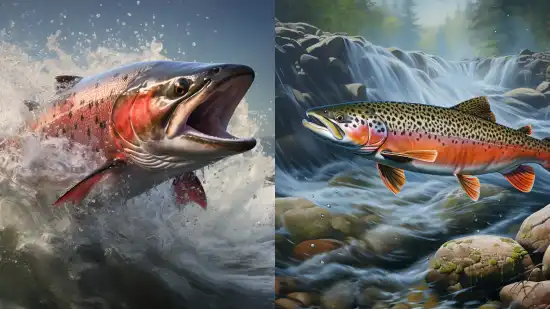
When distinguishing between salmon and trout, there are several key things to pay attention to.
- Physical characteristics
- Coloration and markings
- Tail characteristics
- Scale count
- Head shape
- Eye position
- Tail wrist
Let’s examine these categorical differences in more detail to distinguish salmon from trout.
1. Physical Characteristics
Salmon fish have a more streamlined body with a concave tail and a slender tail wrist. This body structure allows for efficient swimming through water currents. The concave tail provides stability and agility, while the slender tail wrist enhances maneuverability during their migratory journeys.
On the other hand, trout possess a rounder shape, which may be attributed to their preference for still or slow-moving waters. This body structure allows them to conserve energy and maintain buoyancy in such environments.
Additionally, the extended upper jaw of trout, known as the maxilla, is a distinguishing feature that helps differentiate them from salmon.
Understanding these physical characteristics can aid in identifying whether an individual fish belongs to the salmon or trout species.
2. Coloration and Markings
You can easily notice the difference in coloration and markings between the two species of fish.
Salmon tend to have a more varied coloration, with shades of silver, blue, and green on their backs, transitioning to a white belly. During the spawning season, they may develop darker colors and heavier spotting patterns.
In contrast, trout display a distinct pattern with numerous dark spots scattered all over their bodies. These spots are often red or black in color and stand out against their lighter background hues. The spots on trout are usually more prominent than those found on salmon.
Some trout species may also exhibit vibrant colors such as orange or yellow along their sides during certain times of the year.
3. Tail Characteristics
Notice how the tail shape differs between salmon and trout to tell them apart. The fork of a salmon’s tail is usually more pronounced and forked, while trout typically have a square or convex tail shape. This distinction in tail characteristics is important in identifying these fish species.
When observing a salmon, you will notice that its tail appears deeply forked, resembling the shape of a V. This unique feature helps the salmon swim through strong currents and swiftly navigate their environment.
In contrast, trout have tails that are more squared off or slightly curved outwards. This tail shape allows for better maneuverability in slower-moving waters where they often reside.
4. Scale Count
When counting the scales on a salmon or trout, you’ll notice that the number of scales varies depending on the specific region of the fish.
Regarding scale count, salmon typically have 10-13 scales obliquely forward from the adipose fin to the lateral line.
On the other hand, trout usually have 13-16 scales in the same region. This difference in scale count can be used as a distinguishing feature between these two species.
It is important to note that this variation is not absolute, and individual variations may exist within each species.
Examining the scale count in this region allows you to gather valuable information to help identify whether you are dealing with a salmon or a trout.
5. Head Shape
Salmon have a pointed head shape, while trout possess a rounder one. This difference in head morphology can be observed when comparing the two species side by side.
The pointed head of the salmon contributes to its streamlined body, allowing it to swim swiftly through the water.
On the other hand, the rounder head of the trout provides more space for its jaw muscles, enabling it to feed on a wider variety of prey items.
6. Eye Position
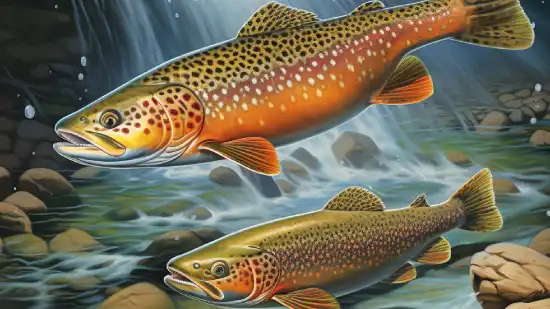
You can easily tell the difference between a salmon and a trout by looking at their eye positions. In the case of a salmon, the maxilla, which is the upper jawbone, does not extend beyond the rear of the eye.
On the other hand, when examining a trout, you will notice that its maxilla extends beyond its eye. This distinction in eye position is an important factor in identifying these two fish species.
By observing this characteristic closely, you can confidently differentiate between a salmon and a trout.
Accurately identifying these fish is crucial for various reasons, such as understanding their ecological roles in freshwater ecosystems and ensuring proper management strategies are implemented to maintain healthy populations.
7. Tail Wrist
Now that you understand how to differentiate between salmon and trout based on their eye position let’s move on to another distinguishing feature: the tail wrist.
The wrist of a salmon’s tail tends to be slender, while trout have a broader tail wrist. This means that if you observe the area where the tail meets the fish’s body, you may notice a difference in width between these two species.
Salmon typically have a narrower connection, resembling a slender wrist, while trout exhibit a wider junction. It is important to note that this characteristic can vary among individual fish within each species and may not be definitive proof of identification.
Nonetheless, examining the shape of the tail wrist can provide valuable clues when determining whether you are looking at a salmon or a trout.
Salmon and Trout Comparison Table
| Aspect | Salmon | Trout |
| Physical Characteristics | Streamlined body, concave tail, slender tail wrist | Round and thickset, extended maxilla (upper jaw) |
| Coloration and Markings | Fewer spots, variable coloration, heavier spotting during spawning | Heavily spotted, prominent patterns |
| Tail Characteristics | Pronounced and forked tail | Square or convex tail shape |
| Scale Count | 10-13 scales from adipose fin to lateral line | 13-16 scales in the same region |
| Head Shape | Pointed head shape | Rounder head shape |
| Eye Position | Maxilla doesn’t extend beyond rear of the eye | Maxilla extends beyond the eye |
| Tail Wrist | Slender tail wrist | Broader tail wrist |
How to Fish for Salmon and Trout: Fly Fishing Techniques
If you’re fly fishing for salmon and trout, specific techniques can help you maximize your chances of success.
1. Fly Fishing for Salmon
When it comes to fly fishing for salmon, there are several key points that you need to consider.
Season and Timing
Salmon are most active during their spawning times, so it’s important to research the season and timing of runs in your fishing location.
This information will aid in identifying when and where to fish for salmon effectively. For example, in New Mexico, Navajo Lake is the best place for salmon fishing.
Timing varies depending on the species and region. Generally, salmon runs occur from late spring to early fall.
Understanding the specific migration patterns of different salmon species will greatly increase your chances of a successful fishing experience.
Choice of Flies
To increase your chances of catching salmon, you’ll want to choose flies that mimic their natural prey. Salmon typically feed on insects, smaller fish, and crustaceans, so selecting flies that imitate these types of food sources is essential.
Streamers and larger patterns effectively attract these powerful fish’s attention. Using flies that closely resemble the salmon’s natural prey can greatly improve your chances of a successful catch.
Casting Technique
Improve your chances of a successful catch by practicing different casting techniques. Two essential techniques for handling various water conditions when targeting salmon are overhead and roll casts.
The overhead cast involves bringing the rod back behind you, then swiftly moving it forward to propel the line and fly towards the target.
On the other hand, the roll cast is useful in tight spaces or when there’s limited room for a back cast.
Presentation
When presenting your fly, pay attention to the speed and depth of the drift for optimal success. Adjusting these factors can help imitate natural movement and increase your chances of enticing a strike.
Remember that different species, such as salmon and trout, may have varying preferences when it comes to presentation. Observing their behavior and studying their feeding patterns can provide valuable insights into how to present your fly effectively.
2. Fly Fishing for Trout
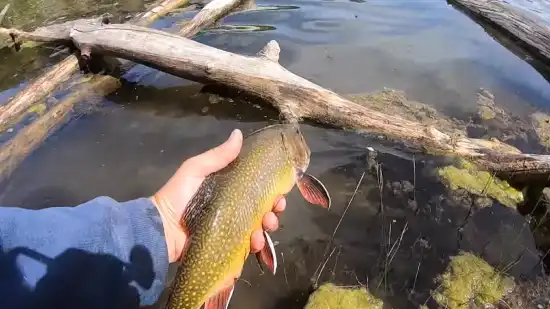
When it comes to fly fishing for trout, make sure to keep these things in mind:
Season and Timing
You have to keep the season and timing in mind when fly fishing for trout. Spring is undoubtedly the best time of year for trout fishing enthusiasts.
During this season, nature seems to come alive, and the waters are at their most inviting. One of the primary reasons spring is ideal for trout fishing is that water temperatures are cooler.
Trout are cold-blooded creatures, which means they thrive in cooler waters. As spring progresses, the melting snow and ice contribute to colder water temperatures, creating the perfect environment for trout.
Timing your trout fishing adventure early in the morning can significantly enhance your chances of success.
During these early hours, the water is typically calmer, and the trout are often closer to the surface, making them more accessible for fly fishing.
Understanding Habits
Trout species exhibit different habits and preferences based on the water types they inhabit.
Brown trout, for example, prefer deeper, slower-moving water where they can hide and ambush their prey.
Rainbow trout, on the other hand, thrive in faster currents that provide them with ample oxygen and food sources.
Understanding these habitat preferences is crucial for successful fishing as it allows you to target specific areas where each species is most likely to be found.
Fly Selection
You’ll want to choose your flies based on the local aquatic insect hatches to ensure success in catching fish. Matching the hatch is crucial for enticing trout to bite.
Dry flies, nymphs, and emergers are common choices. Dry flies imitate insects that float on the water’s surface, while nymphs mimic insects beneath the surface. Emergers represent insects transitioning from underwater to the surface.
Casting Accuracy
Make sure you cast your fly precisely and accurately, aiming for the specific structures where trout tend to hide and feed.
Casting accuracy is crucial in trout fly fishing as it allows you to present your fly in a way that mimics natural movement.
By targeting areas near rocks, logs, or undercut banks, you increase your chances of enticing a trout to strike.
Practice your casting technique to improve your accuracy and maximize your fishing success.
Presentation
Ensure you mend your line properly to achieve a natural presentation, allowing the fly to drift with the current and increasing your chances of fooling a trout into striking.
Mending your line involves repositioning it on the water to avoid drag and create a lifelike movement. By doing so, you mimic the behavior of natural prey, making your fly more enticing to the trout.
A natural presentation is crucial for success in trout fishing as they are highly sensitive to unnatural movements or danger indications.
What are the 5 species of salmon?
There are five species of salmon found in North American waters: chinook, coho, chum, sockeye, and pink salmon. These species play significant roles in both aquatic ecosystems and human consumption.
Chinook, known for their large size and rich flavor, are often sought after by anglers. Coho salmon, with its vibrant color and mild taste, is another popular choice for both fishing and culinary purposes.
Chum salmon, recognizable by their distinctive markings, contribute to the diversity of salmon species.
Sockeye salmon’s deep red flesh and bold flavor make it a favorite for grilling and smoking, whereas pink salmon, the smallest of the Pacific salmon, is known for its delicate taste and appearance.
These diverse species collectively shape the salmon ecosystem and are integral to various cuisines and economies.
Do all salmon start as trout?
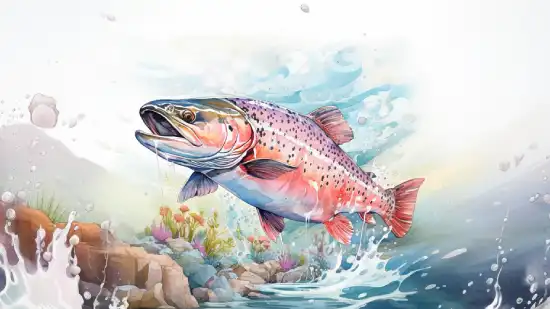
Not all salmon start as trout. While steelhead trout do transform into rainbow trout before migrating to the ocean and returning to freshwater, regular salmon remain salmon throughout their life cycle.
They are born in freshwater, spend most of their lives in the ocean, and return to their natal streams to spawn. Both steelhead and salmon are anadromous species due to their migration patterns between freshwater and saltwater environments.
How old is a 20-inch rainbow trout?
A 20-inch rainbow trout is typically around 5 years old, with growth rate varying based on factors such as habitat conditions, food availability, and genetic variations.
Under favorable conditions, rainbow trout can grow at a rate of approximately 4 inches per year, making a 20-inch trout’s age a strong indicator of being around 5 years old.
However, individual variation may exist, and the age of a rainbow trout can also be affected by other external factors, such as water temperature and oxygen levels.
What size trout is worth keeping?
The best size trout to keep for a good balance of taste and texture is typically around 10 to 12 inches. The trout are more mature at this size, resulting in flavorful and well-developed flesh. Their meat is firm yet tender, making it ideal for cooking or grilling.
It is important to consider the sustainability of fishing practices when deciding whether to keep a trout. By practicing catch-and-release for larger fish, you maintain a healthy fish population and enhance the overall fishing experience.
Releasing most of the fish back into the river allows them to continue growing and potentially reach larger sizes in the future. This approach ensures that quality-sized trout will always be available for catching while promoting sustainable fishing practices.
Identify Salmon and Trout to Improve Your Fly Fishing Experience
You can now confidently distinguish between salmon and trout with confidence during your exhilarating fly fishing escapades.
Knowing physical characteristics, coloration, tail traits, scale counts, head shape, eye position, and tail wrists is key to unlocking the enigmatic world beneath the water’s surface.
Armed with this understanding, you’re not just an angler but an observer of nature’s intricate tapestry. With each cast and retrieval, you engage with the river’s inhabitants in a way that deepens your connection to the ecosystem and heightens the thrill of the catch.
Castaway, and may your next fly fishing expedition be a harmonious dance with these remarkable water creatures.

